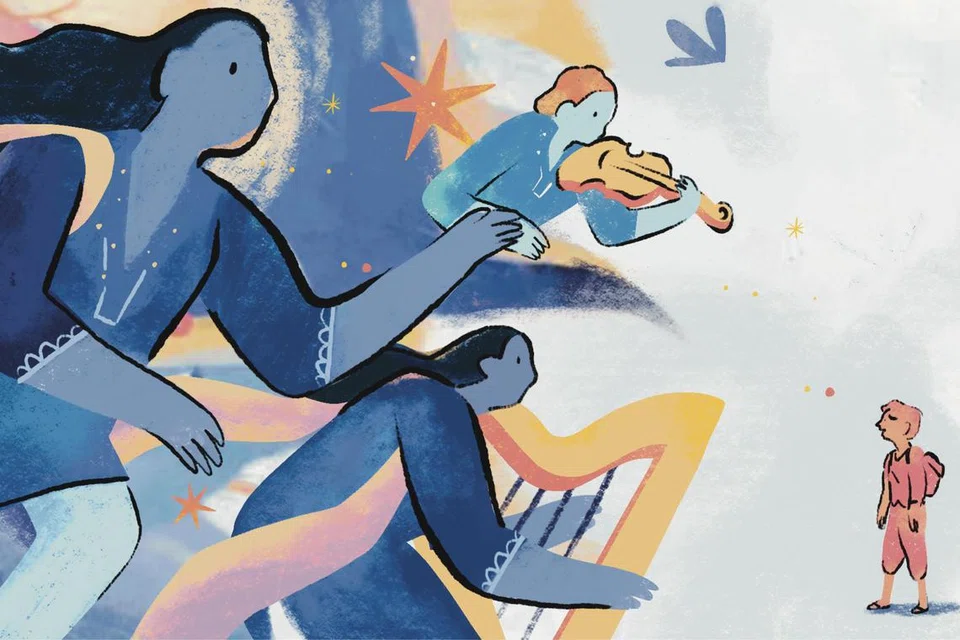A Modern Musical Take on LOTR
Amid the humdrum of daily city life, few moments feel as transcendent as sitting in a packed theatre, waiting for the lights to dim and being transported into the story unfolding on stage by the swell of music.
Lord of the Rings (LOTR): A Musical Tale, now playing at the Sands Theatre until Aug 31, delivered many such moments, thanks in large part to its immersive and globally inspired soundscapes, scored by Indian musical maestro A R Rahman, Finnish folk band Varttina, and English composer Christopher Nightingale.
“I don’t want to be pigeonholed into being an Indian composer. Music is universal, and I want to see what I can bring to something new to this Middle Europe, Middle-earth kind of thing,” said Rahman in an interview with Channel News Asia on July 25.
While Varttina handled the earthy, ancient textures of Middle-earth, Rahman focused on the more cinematic elements – the orchestration of war, the emotional highs and lows, and the sounds of darkness.
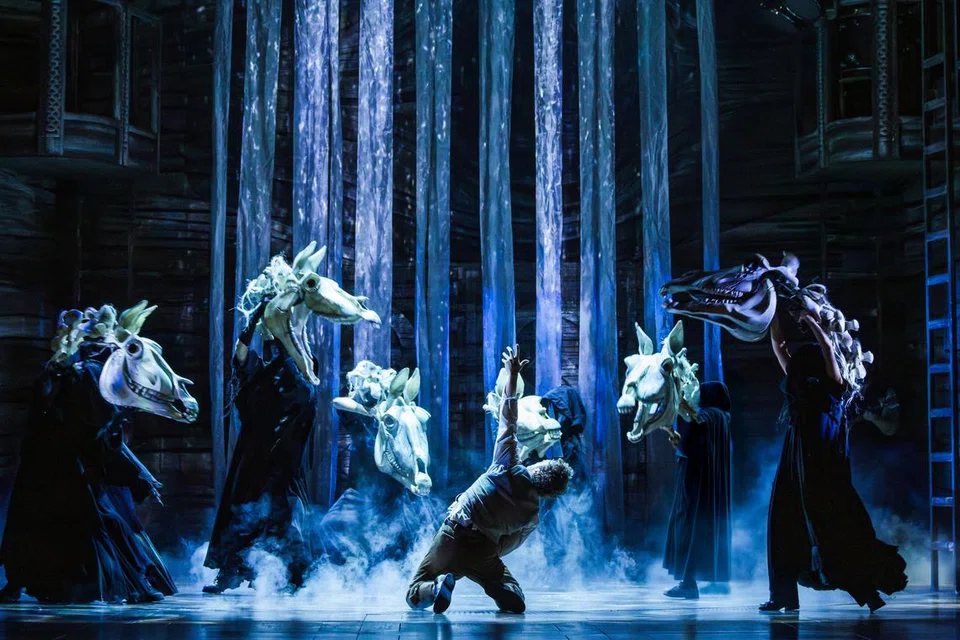
The show had the unenviable task of condensing three J.R.R. Tolkien novels’ worth of plot into an under-three-hour musical. The production team had to recreate a variety of settings – from the hobbits’ Shire in the countryside and the elves’ Rivendell near the river to the dwarves’ Khazad-dum up in the mountains – on a compact stage.
Alongside innovative lighting techniques, the music played a crucial role in convincing the audience of these imagined spaces. “In addition to the story, the music and the heightened expression of thought through song and lyrics are essential elements of a great musical,” said Kevin Wallace, the show’s producer.
Casting an ensemble of actor-musicians who play their instruments live on stage, rather than relying on an orchestra hidden in a pit, proved to be an astute decision.
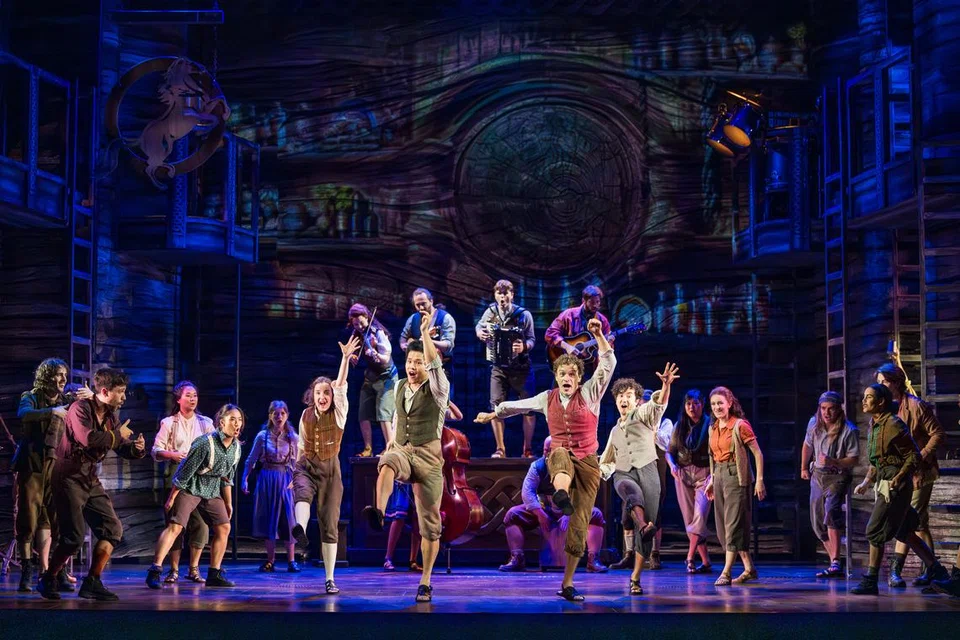
“Now and For Always”, a comforting duet between the main protagonists, Frodo and Samwise, was portrayed convincingly by Rarmian Newton and Wern Mak. As the latter strums the guitar to console his friend on their perilous journey ahead, the depth of their friendship is brought to the forefront.
“The Final Battle” is a dramatic piece, driven by heavy drumbeats and eerie chants, accompanying the climactic scene in which Gollum, one of the antagonists, falls into a volcano in slow motion; creatively staged with a harness and a billowing sheet of fabric illuminated with ominous red lights to mimic the molten lava.
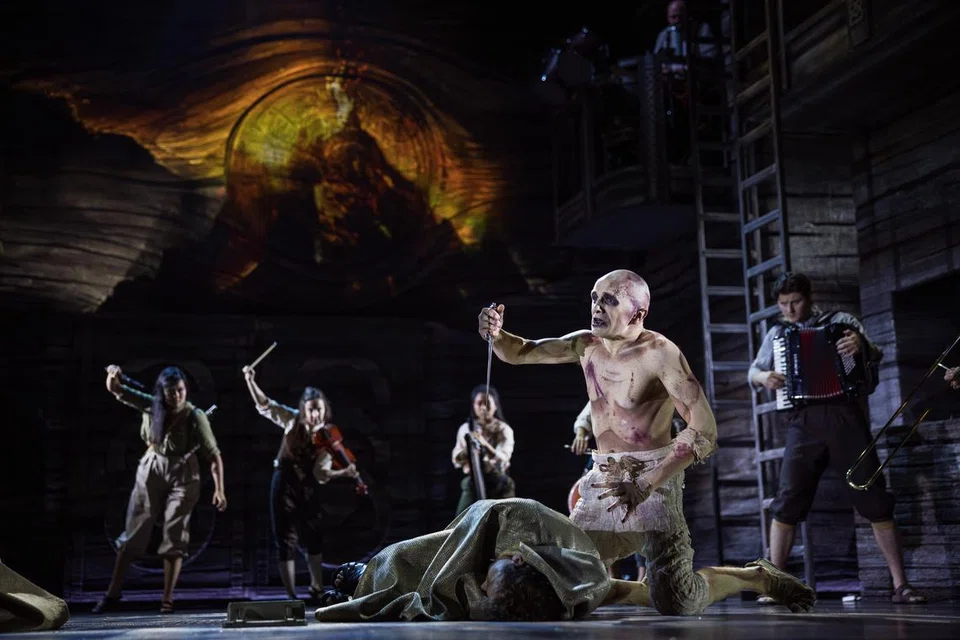
The music also elevated the choreography, costume and set designs. Anjali Mehra, the musical’s choreographer, researched traditional social dances from a wide range of cultures, from English, Irish, Scottish and Welsh to Middle Eastern, Slavic and Indian.
“Bhangra was one of the influences, and it helped that some of the music had an undercurrent which complemented it. I also felt that there is such a huge sense of pride and visceral joy in the social dances that you see at Indian weddings and parties, so this felt very pertinent to the Hobbit world,” Anjali said.
Similarly, the hobbits’ costumes were inspired by German and Celtic garbs like waistcoats, breeches, and suspenders made from naturally dyed linen and cotton to match their rural environment. “The further they get away from the shire, the less familiar things become,” said Simon Kenny, the musical’s costume and set designer.
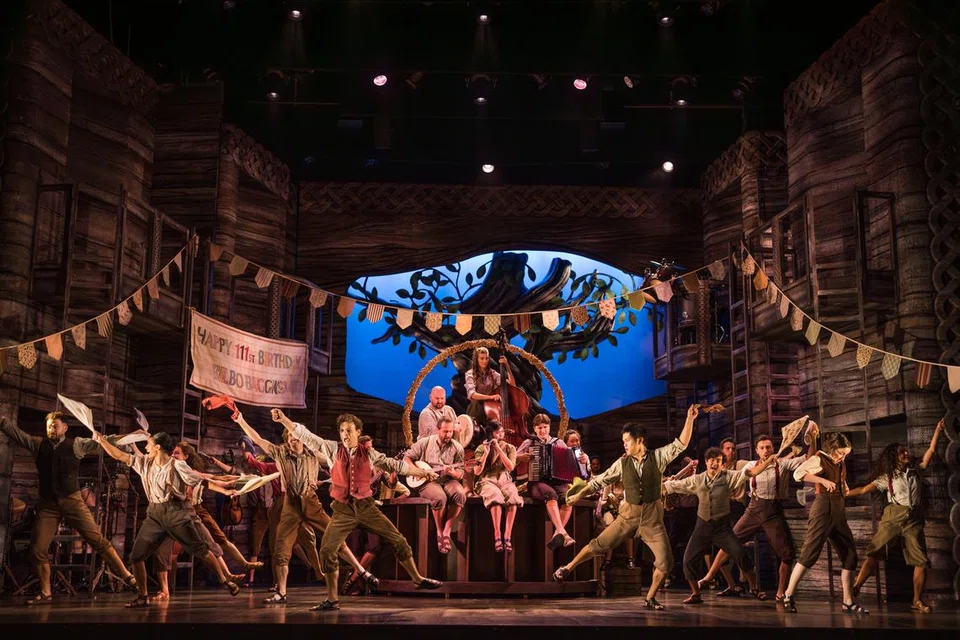
Hence, the silhouettes of the elves’ outfits drew inspiration from Indian garments such as the sherwani and salwar kameez, reflecting the culturally rich and sophisticated elven world. “It’s a lot of rich blues and silks, purples, and silver. Everything feels a bit more metallic and a little more luxurious,” he added.
Ryan Mennen, 37, had been on the waitlist for about a year to see this musical.
His fandom began when he was sent to the library for detention in primary school. There, Ryan discovered The Two Towers, the second book in the Lord of the Rings trilogy. He started reading the rest of the books thereafter, and when the Peter Jackson films were released a few years later, it cemented his obsession with the franchise.
“I think it’s very interesting to see what they have done with the set design and to see the musical dimension, something we’ve not seen before. But it also feels a bit too fast-paced, and someone who is not familiar with the source material may find it harder to understand what’s happening,” Ryan noted.
